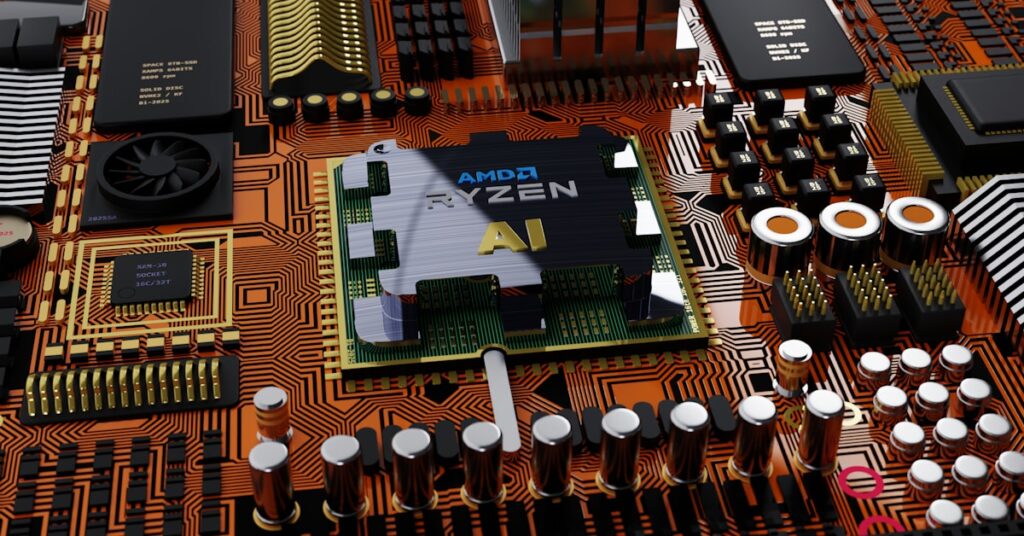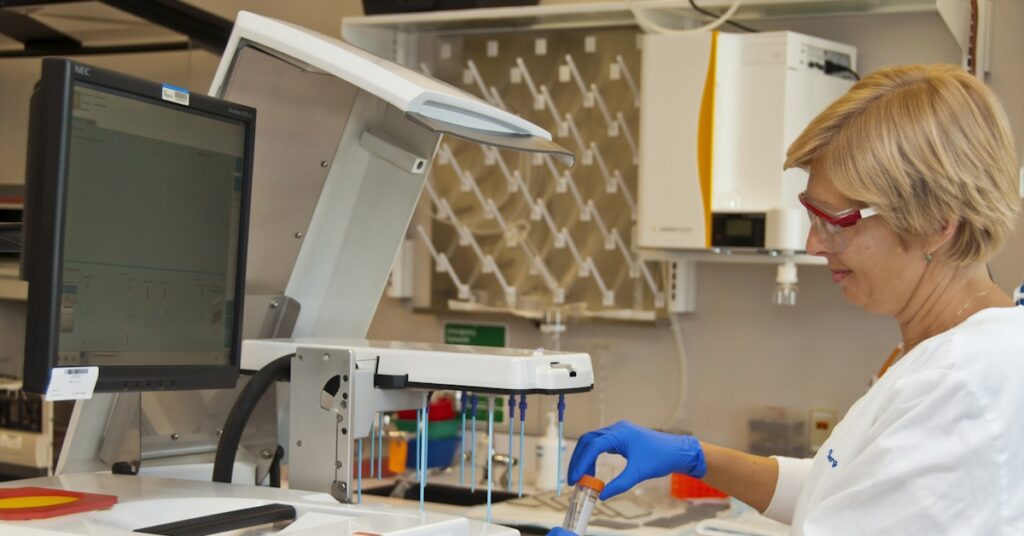Are your IoT devices becoming unmanageable?
Your fragmented tools are likely creating security gaps and deployment bottlenecks, making it nearly impossible to scale your network.
The real problem is when complex integration requirements clash with limited budgets, stalling projects and frustrating your entire solutions team.
This constant battle to reconcile different vendor systems introduces unforeseen security risks. It also creates significant maintenance overhead that ultimately undermines your project’s return on investment.
Speaking of managing devices, my guide on best mobile device management software offers strategies to fortify your security and ensure compliance.
A unified platform can solve this headache by centralizing all your device management, simplifying even the most complex, distributed IoT deployments.
In this guide, I’ll walk you through my picks for the best IoT device management software to help you conquer complexity and scale securely.
You’ll discover solutions that automate provisioning, ensure compliance, and provide actionable insights to slash your long-term operational and maintenance costs.
Let’s get started.
Quick Summary:
| # | Software | Rating | Best For |
|---|---|---|---|
| 1 | Losant → | Large industrial enterprises | |
| 2 | Jamf → | Apple-first organizations | |
| 3 | Software AG → | Enterprises needing data integration | |
| 4 | Particle → | Industrial automation firms | |
| 5 | Golioth → | Hardware startups & SMBs |
1. Losant

Struggling to manage your complex IoT integrations?
Losant’s Enterprise IoT Platform is designed to simplify data management and orchestration for your connected devices.
This means you can easily connect, visualize, and automate your devices and data, gaining real-time insights and actionable intelligence to drive your business forward.
It’s time to streamline your IoT operations.
Here’s how Losant helps: it offers a low-code workflow engine that collects, centralizes, and integrates data from all your connected devices and systems. This platform provides seamless data orchestration and visualization, eliminating efficiency barriers.
Additionally, Losant enables you to transform your products into intelligent assets through custom branding, API integration, and effortless multi-tenancy. You can integrate with PLCs, CRMs, Azure/AWS, and more, benefiting from automatic provisioning and digital twin capabilities, crucial for large-scale deployments. Losant’s robust infrastructure handles millions of data points per second, ensuring limitless scalability for your expanding business.
The result is a powerful platform that securely scales to millions of devices.
While we’re discussing data and insights, my guide on marketing analytics tools covers how to boost your ROI.
Key features:
- Low-code workflow engine: Quickly connects, centralizes, and integrates data from all your devices, simplifying complex data orchestration and visualization tasks.
- Seamless scalability and performance: Effortlessly handles millions of data points per second, allowing you to add new devices, users, and applications as your business grows without hitting limits.
- Advanced asset intelligence: Supports custom branding, API integration, multi-tenancy, and digital twin capabilities, transforming your products into intelligent, monitorable assets.
Losant features, pricing, & alternatives →
Verdict: Losant is an excellent choice for enterprises seeking the best IoT device management software that offers a robust, scalable, and flexible solution. Its ability to handle millions of data points per second, coupled with features like digital twins and multi-tenancy, makes it ideal for complex industrial IoT, asset tracking, and smart environment applications, as demonstrated by Clark Construction and NimbeLink’s success stories.
2. Jamf
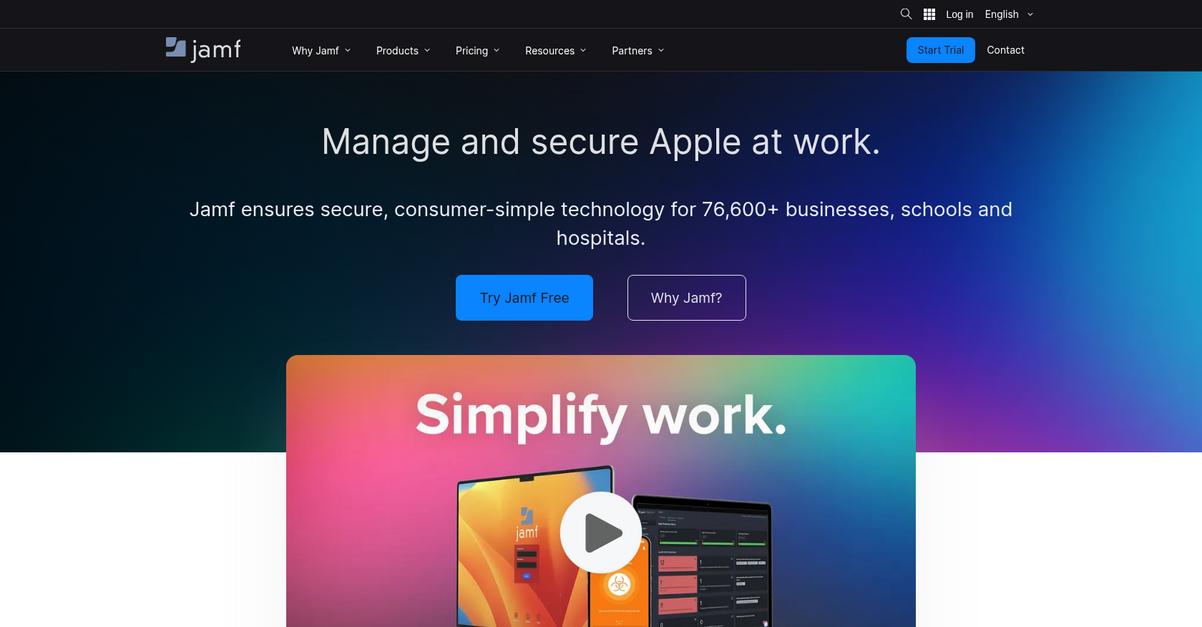
Struggling with fragmented device management and security?
Jamf offers a complete Apple device management and security solution, simplifying your complex tech stack. This means you can integrate management, security, and the Apple experience for your Mac, iPhone, iPad, Vision Pro, Apple Watch, and Apple TV devices.
This allows your organization to automate and scale Apple IT and security workflows, ensuring your users are empowered with technology while maintaining robust security.
Here’s how to simplify your tech stack.
Jamf solves complex IoT device management by providing zero-touch deployment, mobile device management (MDM), and app management. It offers inventory management and Self Service capabilities, allowing users to address common issues independently.
Additionally, Jamf provides robust identity and access management, endpoint protection, and threat prevention. You get content filtering, safe internet, and Zero Trust Network Access (ZTNA) for comprehensive security. This platform offers security visibility and compliance, which is crucial for maintaining standards across your distributed networks.
Plus, with nearly 20 years of experience and same-day Apple OS support, Jamf ensures secure, consumer-simple technology for businesses, schools, and hospitals, supporting student success and transforming employee productivity.
Manage and secure your Apple devices effectively.
Key features:
- Complete Apple Management & Security: Get end-to-end solutions for all your Apple devices, including Macs, iPhones, and iPads, simplifying IT and security workflows across your organization.
- Automated Deployment & Inventory: Streamline the setup and tracking of devices with zero-touch deployment and comprehensive inventory management, reducing manual effort and deployment bottlenecks.
- Comprehensive Security & Compliance: Benefit from endpoint protection, threat prevention, ZTNA, and compliance features, ensuring your devices and data remain secure while meeting regulatory standards.
Jamf features, pricing, & alternatives →
Verdict: Jamf offers a powerful and comprehensive platform, making it a strong contender for the best IoT device management software, particularly for Apple-first environments. Its robust capabilities like zero-touch deployment and endpoint security help your organization overcome integration challenges and achieve scalable IoT deployments securely. Jamf serves over 76,600 businesses, schools, and hospitals.
3. Software AG
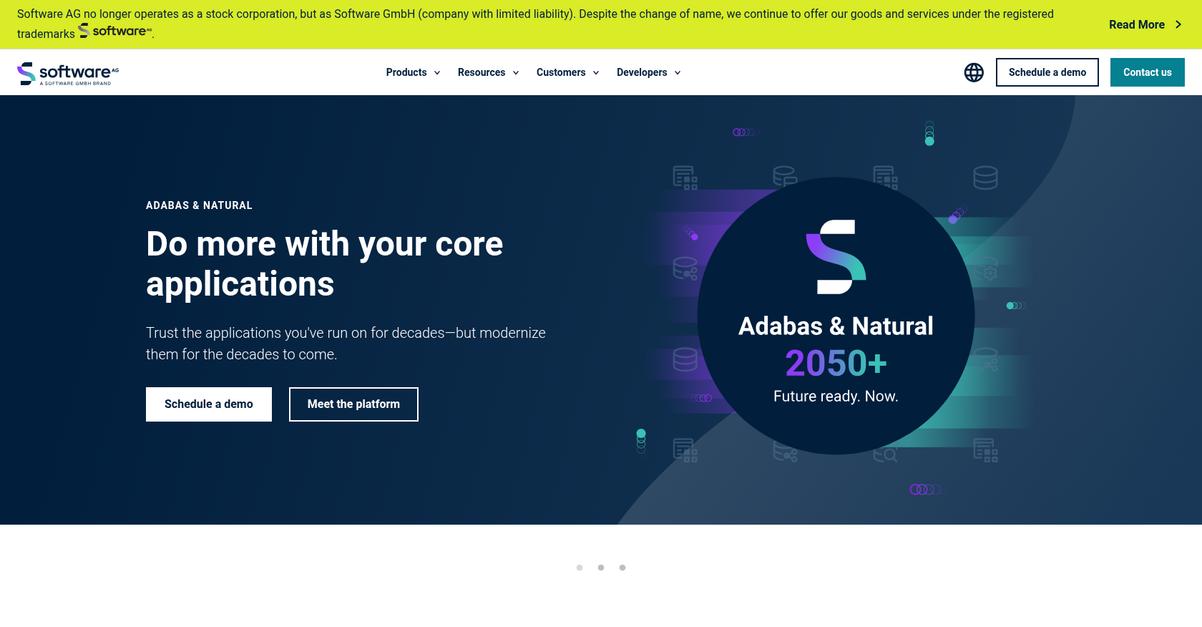
Struggling to integrate diverse IoT devices securely?
Software AG offers solutions like Adabas & Natural to modernize and deploy high-performance applications on various platforms. This means you can easily build and deploy critical applications, even connecting to the latest innovations.
This addresses your pain points around fragmented tools, offering a centralized platform to streamline IoT deployments. It moves you past the challenges of disjointed systems.
Ready to conquer complexity?
Software AG provides Enterprise Applications and Data Virtualization & Movement capabilities. You can utilize Adabas & Natural for mission-critical applications and CONNX to access, virtualize, and move data regardless of its structure or location.
This allows you to power new apps, analytics, AI, and hybrid cloud environments from your existing data sources. Plus, with options for on-premise, cloud, or hybrid deployments, you gain the flexibility needed for scalable IoT.
Additionally, their solutions focus on modernizing development and optimizing costs, helping attract new talent. This integrated approach ensures your IoT deployments are both efficient and resilient.
Maximize security and scale effectively.
While we’re discussing how to scale your operations, understanding customer and employee experience is equally important for long-term success.
Key features:
- High-performance applications: Develop and deploy mission-critical applications in a modern DevOps environment, ensuring secure and resilient operations for your IoT ecosystem.
- Comprehensive data integration: Easily access, virtualize, and move data from various sources, powering new analytics, AI, and hybrid cloud solutions for unified insights.
- Flexible deployment options: Run your applications on-premise, in the cloud, or in a hybrid setup, connecting seamlessly with the latest innovations for adaptable IoT management.
Software AG features, pricing, & alternatives →
Verdict: Software AG emerges as a strong contender for the best IoT device management software, particularly for enterprises needing robust data integration and application modernization. Their solutions empower you to unify fragmented systems and leverage existing data for new applications, improving security and scaling capabilities.
4. Particle

Struggling with fragmented IoT tools and integration headaches?
Particle provides a unified IoT platform with comprehensive application development and robust edge-to-cloud infrastructure. This tackles the complexities of device management head-on.
Particle helps you centralize control and scale securely, ensuring your deployments are not just operational, but truly optimized. It delivers complete control for all your devices.
Gain complete control over your IoT fleet.
Particle offers integrated development tools like Web IDE and Workbench, letting you write code and deploy updates remotely. This simplifies workflows for engineers like you.
The platform provides reliable over-the-air (OTA) software updates, essential for maintaining security and performance across your deployed devices. You also get enterprise-grade security and compliance tools to manage access and alerts, coupled with EtherSIM for global, self-healing connectivity. Plus, robust cloud infrastructure turns device data into actionable insights through real-time automation and over 250 data integrations.
Manage everything from one centralized console.
If you’re also looking into optimizing your team’s capabilities, my article on best freelance platform covers strategies for efficient hiring.
Key features:
- Integrated Development Environment: Offers Workbench and Web IDE for seamless application development, debugging, and over-the-air firmware flashing.
- Reliable Connectivity: Provides “it just works” wireless connectivity across LTE, 5G, Wi-Fi, Satellite, and LoRaWAN, ensuring consistent device communication.
- Centralized Fleet Management: The Console provides a single pane of glass for monitoring, managing, and securing your entire IoT device fleet in the field.
Particle features, pricing, & alternatives →
Verdict: Particle stands out as a leading contender for the best IoT device management software, particularly for industrial automation and smart city applications. With its robust platform, including integrated development tools and comprehensive fleet management features, it addresses critical pain points like complex integrations and security compliance, enabling scalable and secure IoT deployments.
5. Golioth

Is IoT complexity slowing your product launches?
Golioth offers a flexible firmware SDK to connect microcontrollers and manage unlimited IoT devices, sidestepping cloud infrastructure headaches.
This means you can build and launch connected hardware faster, getting your products to market without extensive backend development.
Ditch infrastructure struggles, connect your devices easily.
Golioth simplifies getting hardware online, letting you write firmware once for universal connectivity across Wi-Fi, Cellular, Ethernet, Thread, or Bluetooth.
You can manage all device types through one console, API, and billing system. This unified approach eliminates fragmented tools and deployment bottlenecks.
Additionally, its built-in AI orchestration runs inference where you need it, optimizing decisions at the edge to reduce bandwidth costs, while the Golioth Pipelines route transformed device data to analytics platforms, AI models, or data lakes with simple YAML configurations, streamlining business insights.
The result is smarter, faster product deployment.
Key features:
- Flexible Firmware SDK & Device Connectivity: Connects microcontrollers and diverse hardware (Wi-Fi, Cellular, Bluetooth) with a single firmware, eliminating custom bridge development.
- Centralized Device Management & AI Orchestration: Manage unlimited devices from one console, API, and billing system, while built-in AI handles inference across devices and cloud.
- Automated Data Routing & Fleet Management: Transform and route raw device data via Golioth Pipelines to any cloud service, alongside real-time monitoring and bulk operations for your fleet.
Golioth features, pricing, & alternatives →
Verdict: Golioth stands out as a strong contender for the best IoT device management software by simplifying complex infrastructure. It provides centralized control, AI orchestration, and flexible data routing, allowing you to deploy AI-powered products faster and reduce support costs, as evidenced by users like Ribbit Network going from testing to production quickly.
6. ThingsBoard
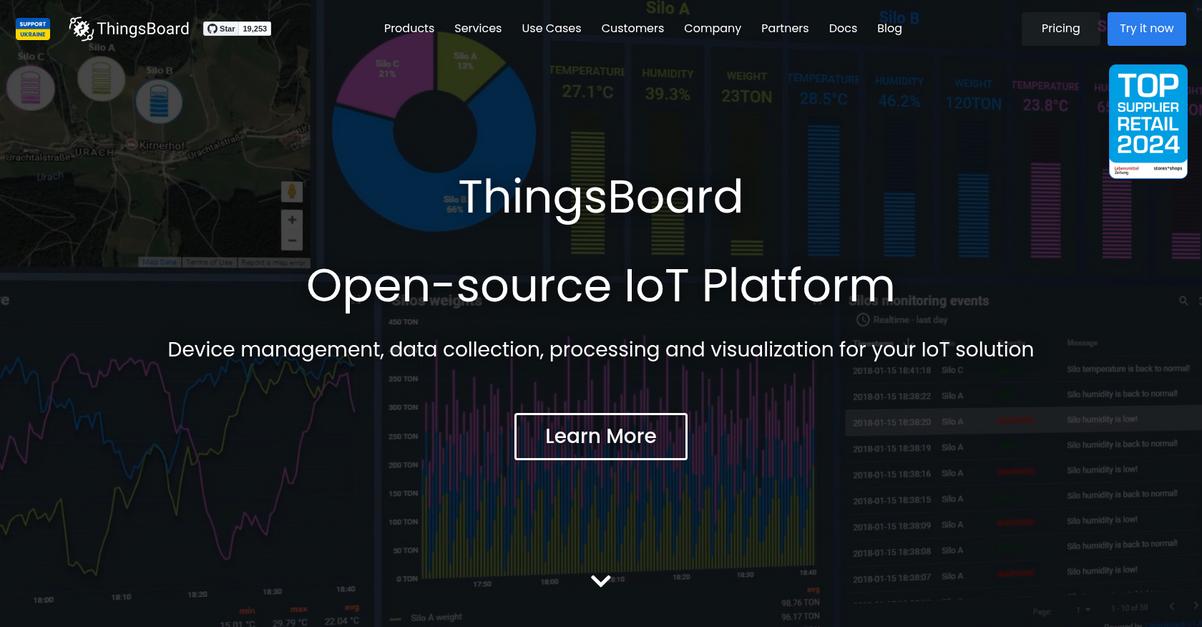
Struggling with complex IoT device management?
ThingsBoard offers robust device connectivity via standard IoT protocols like MQTT, CoAP, and HTTP. This means you can provision and manage all your IoT entities securely.
You’ll appreciate how the platform collects and stores telemetry data in a scalable, fault-tolerant way, ensuring you never lose crucial information.
Here’s how to simplify.
ThingsBoard allows you to define data processing rule chains, transforming and normalizing your device data. You can raise alarms on incoming telemetry events, attribute updates, and even device inactivity.
This enables real-time monitoring and control of industrial processes with SCADA capabilities, offering full flexibility to design and oversee your operations. ThingsBoard also supports both cloud and on-premises deployments, providing maximum scalability and fault-tolerance through its microservices architecture. It even lets you create rich IoT Dashboards for real-time data visualization and remote device control across various use cases like smart energy, farming, and retail, utilizing over 30 customizable widgets.
Unlock unparalleled control and insights.
While we’re on the topic of extracting valuable insights, you might also find my guide on content analytics software useful for understanding user engagement.
Key features:
- Device and Asset Management: Securely provision, monitor, and control your IoT devices and assets, while also defining relationships between entities for comprehensive oversight.
- Data Collection and Visualization: Collect and store telemetry data in a scalable, fault-tolerant manner, then visualize it using built-in or custom widgets and flexible, shareable dashboards.
- IoT Rule Engine: Process incoming device data with flexible rule chains, raising alarms on various events and enriching server-side functionality with highly customizable logic.
ThingsBoard features, pricing, & alternatives →
Verdict: ThingsBoard is an excellent choice for those seeking the best IoT device management software, offering robust features like real-time data collection, customizable dashboards, and a flexible rule engine to address complex integration needs and optimize operational efficiency across diverse use cases.
7. Emnify
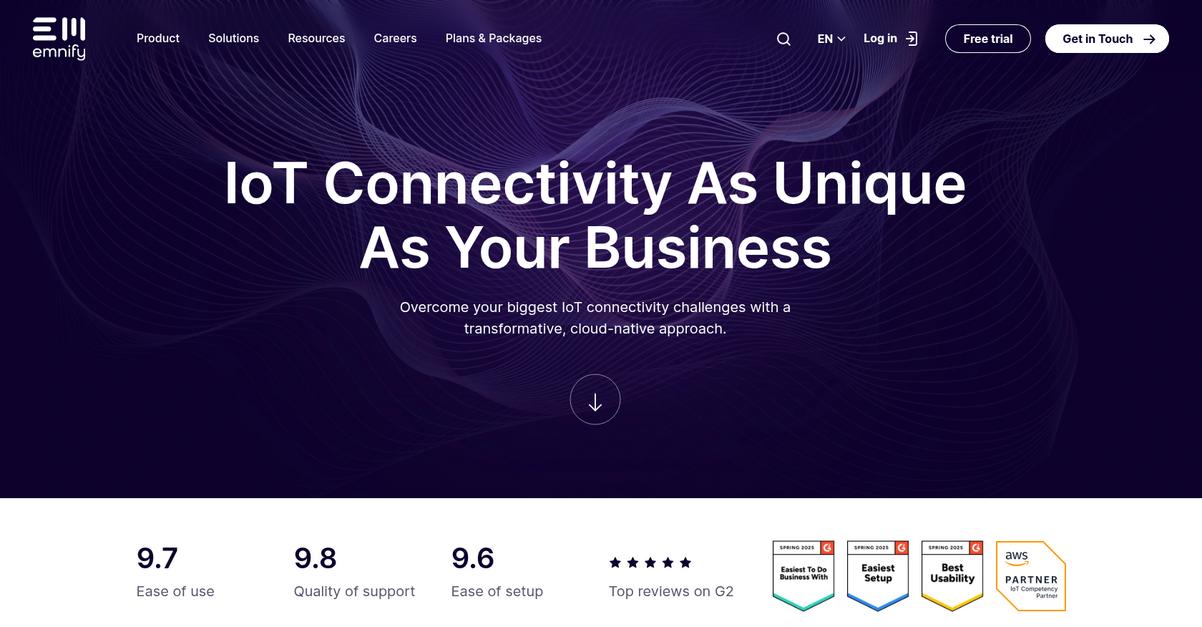
Struggling with fragmented IoT tools and integration complexities?
Emnify offers a transformative cloud-native approach to overcome your biggest IoT connectivity challenges.
This means you can easily integrate all connectivity management capabilities into your IoT operations, with full device and network-level data for optimization.
You need seamless global IoT connectivity.
Emnify delivers a cloud-native IoT SuperNetwork, designed for businesses that need seamless integration and a global presence. This converged cellular and satellite solution provides unparalleled availability and global reach, reducing operational overhead. You get real-time insights across all networks, essential for optimizing performance and minimizing downtime. Additionally, the platform’s API-first design ensures automated integrations, letting you connect seamlessly with your existing tools, portals, and applications. Plus, you benefit from end-to-end security, increasing data protection and device uptime.
Get total control over your IoT deployment.
Key features:
- Global IoT Connectivity: Provides full and redundant IoT coverage wherever your devices are, and wherever you plan to grow in the future.
- Total Connectivity Management: Allows you to provision and manage your IoT device connectivity at scale, offering real-time insights for optimization.
- End-to-End Security: Increases data and device protection, ensuring compliance with network security policies and boosting uptime.
Emnify features, pricing, & alternatives →
Verdict: Emnify stands out as a strong contender for the best IoT device management software, particularly for IT architects and IoT solutions managers at mid-sized to large enterprises. Its cloud-native IoT SuperNetwork, combined with global coverage and robust security, addresses key pain points like integration challenges, scalability, and compliance, making it ideal for industries such as smart building, fleet management, and manufacturing.
Conclusion
Ready to conquer IoT device complexity?
I’ve seen it happen. Fragmented tools and integration headaches create massive deployment bottlenecks. This stalls your projects before they even get started, wasting valuable resources.
A recent study found that the right platform leads to 40% faster deployments. Think about that—and a 30% reduction in downtime. This completely changes your project’s ROI and operational stability.
Here’s my top recommendation.
After evaluating all these tools, I believe Losant is the best choice for conquering complexity. It helps you scale your network securely and efficiently without getting bogged down.
While we’re discussing optimizing your operations, my guide on best vendors management software is equally important for overall business efficiency.
Its powerful low-code workflow engine simplifies complex data orchestration. Choosing the best IoT device management software like Losant means you can scale to millions of devices without hitting performance limits.
I highly recommend you book a free demo of Losant to see how its unified platform can streamline your entire IoT operation.
You’ll gain actionable intelligence almost instantly.
